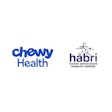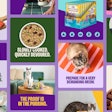The U.S. is by far the largest pet food market in the world, but recent trends indicate that the center of pet food industry growth is shifting away from North America and Europe, according to market research firm Packaged Facts in the new report Pet Food: U.S. Market and International Perspectives. The report profiles more than a dozen countries worldwide.
"The pet food market, especially the market for dog and cat food, has truly gone global," says David Sprinkle, research director for Packaged Facts. "The national markets showing highest longer-term promise for future growth period include Argentina, Australia, Brazil, China, India, Japan, Mexico, Russia and South Korea."
Betting on Brazil
Brazil heads this second tier of national markets with combined dog and cat food sales of US$1 billion or more. Brazil is home to over 132 million pets, including 77 million dogs and cats, making it the fourth largest pet population worldwide behind China, the United States, and the United Kingdom. Brazil's strength also lies the fact that the two global pet food kingpins lead the Brazilian market, with Mars (Mars Brasil Alimentos Ltda) out front followed by Nestlé (Nestle Brasil Ltda).
"From a global perspective point of view the Brazilian pet market is prized, and for good reason," says Sprinkle. "As the world's second largest producer of dry pet food after the U.S. and a huge exporter, Brazil harbors major opportunities for pet food manufacturers and marketers. Which is why, though already heavily invested in the market, both Mars and Nestlé opened new pet food plants in Brazil in 2017, both to ramp up production for the domestic market and to export to Latin American neighbors like Argentina, Colombia, and Peru."
Packaged Facts' research also found that the pets-as-family trend is front and center as a market driver in many countries outside the United States, including in Brazil, indicating opportunity for marketers to eventually sell customers on premium priced products. When it comes to pet food, premiumization is at a relatively early stage compared with North America, but marketers' expectation of—and contribution to—increased humanization is playing out in more specialized diets. Among these are formulations targeting life stage, weight, digestive care, and hair and skin care, as well as specialized diets for cats, including hairball and post-neutering.
"Brazil's pet parents are often highly educated about the needs of their pets needs and willing to invest especially in health-focused products with the aim of keeping their furry friends around as long as possible," says Sprinkle.
The case for China
China continues to climb the global pet food market lists, making it one of the fastest growing pet care markets alongside Mexico, Russia, and, of course, Brazil. Packaged Facts reports that the Chinese pet market is already in a dynamic growth stage, with impressive annual growth rates in recent years.
"No country has more pet market growth potential than China, which is partly a function of yet-to-be-realized pet population growth and broader usage of commercial pet food," says Sprinkle.
For more than a decade, pet ownership has been spreading from rural areas into the cities. There are indications of strongly surging dog and cat populations in the country, especially among cat ownership, which makes sense considering cats' are more readily suitable to modern, high-density urban lifestyles.
"Dogs and cats are charting double-digit growth in China. However, cat ownership in particular is being driven by younger, urban Chinese pet owners with busy lifestyles, smaller living spaces, and a growing need for the emotional supports offer, among other factors," says Sprinkle.
Much like in Brazil, Packaged Facts believes there's opportunity to gradually upscale Chinese pet owners to premium pet products, including pet food.
"Many emerging and mid-level markets almost inevitably follow the pet industry trends set by the developed markets of North America and Western Europe, indicating that a rising tide of pet food premiumization in China seems inevitable," remarks Sprinkle. "Already, there's been the appearance and advancement of premium products in other pet care categories, such as smart feeders and other tech-based products, and better quality cat litter."
Packaged Facts points to several encouraging signs hinting at the potential of premiumization in the Chinese pet market. For example, products featuring natural ingredients continue to outperform regular pet food, and grain-free products are beginning to catch on (though it's worth nothing that this trend may be cut short, depending on the results of U.S. investigation into a possible association between grain-free pet food and canine dilated cardiomyopathy). Other areas of growth, as in the U.S., include freeze-dried and chilled pet food and treat options, and specialized foods targeting life stages and specific health conditions, such as for senior or overweight pets.
Likewise, the young adult/urban lifestyle-driven trend toward cats signals promise for smaller dogs as well, and for both animal types opportunities for pet food premiumization abound. Because they consume less, cats and smaller dogs are excellent candidates for premium-style single-serve cups, pouches, and trays of wet food, which can make up for the smaller volume by delivering higher margins.













